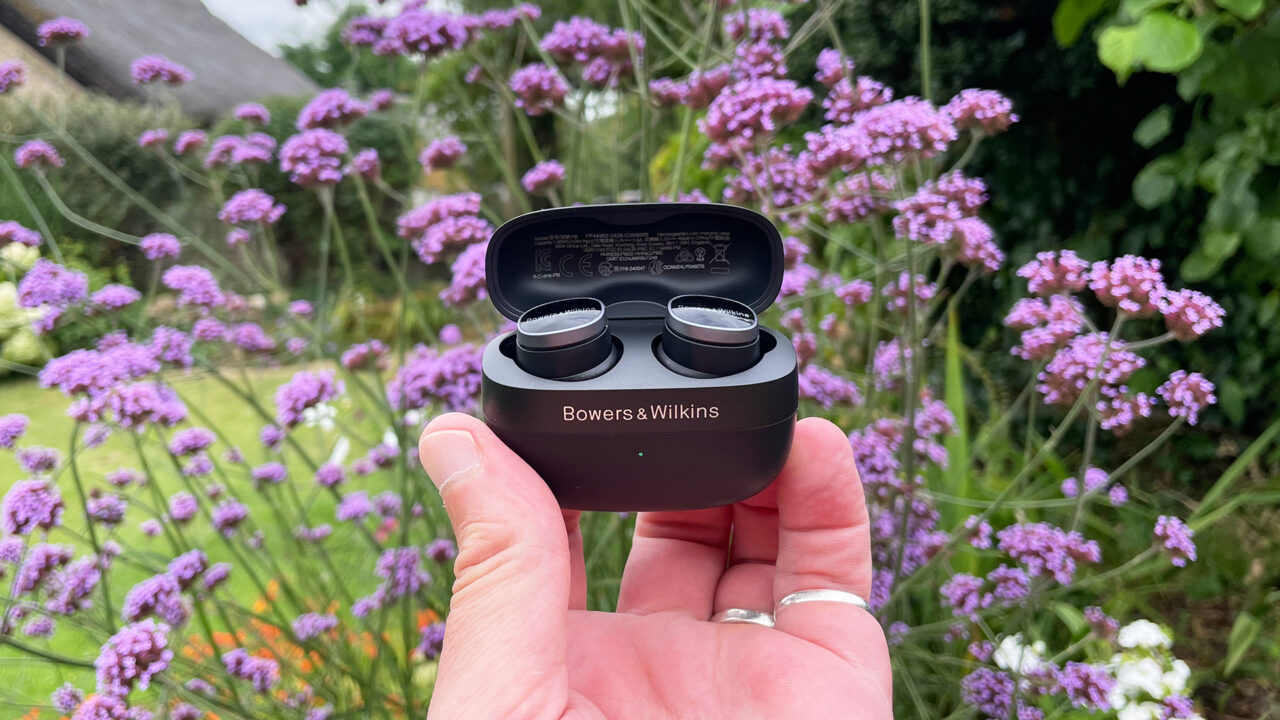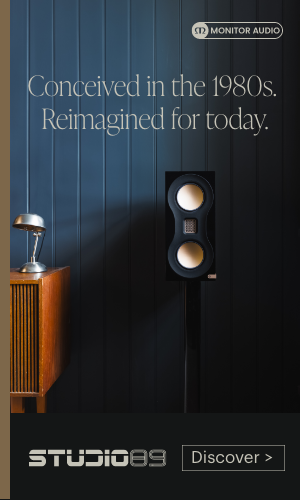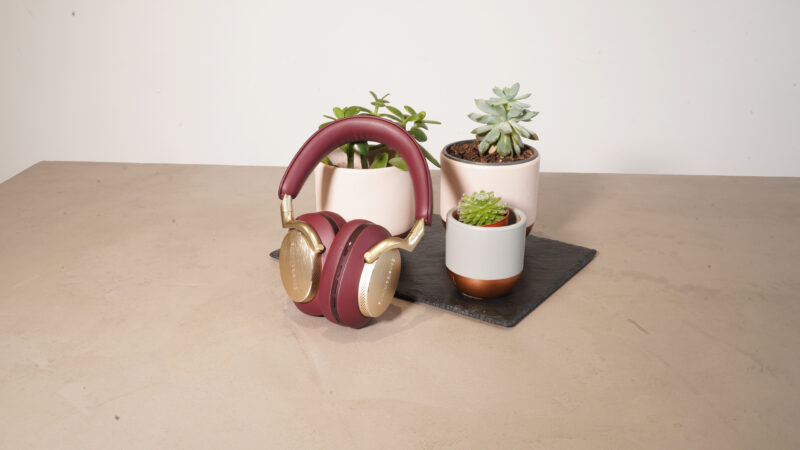The Bowers & Wilkins Pi8 wireless in-ear headphone is the new flagship model of two noise-cancelling earbuds unveiled today (21 August ’24) by the British audio specialist. The Pi8 joins the new entry-level Pi6 wireless earbuds with an all-new design that prioritises comfort and sound quality.
The Bowers & Wilkins Pi8 in-ear headphone costs £349, which is exactly the same price as its predecessor. It’s available to preorder from select retailers and is expected to be on full sale from 28th August. The Pi6 and Pi8 replace the Pi5 and Pi7 S2 iterations that launched simultaneously in January 2023.
While the static price between iterations should be applauded for such a major redesign, it still makes the new flagship wireless earbuds more costly than several top-ranking designs I’ve seen from mainstream brands like Apple, Bose, and Sony. What’s more, it’s important to point out that headphone lovers can buy the company’s entry-level Px7 S2e over-ears for just £30 extra.

Boxing clever, the Pi8 alongside its Pi7 S2 predecessor
I’m a fan of previous Bowers & Wilkins’ in-ear designs as well as its exceptional Px7 S2e and lavish flagship Px8 over-ear headphone designs. In fact, in a former editorial role I ranked the Pi7 S2 in-ears among the best wireless earbuds I’ve heard for their balance of great sound quality and strong musical connection. Despite Bowers & Wilkins’ celebrated audio credentials, though, the wireless earbuds market has evolved quickly and the larger earbuds’ chunky design and elongated charging case wasn’t everything it could be, and the Pi7 S2 quickly looked out of step compared to newer arrivals.
🎥 Watch Bowers & Wilkins’ Andy Kerr summarise what’s gone into the brand’s new Pi6 and Pi8 earbuds.
Modern love
Although it’s only 18-months since the Pi7 S2 landed, the British audio specialist acknowledges that the outgoing in-ear had some design flaws compared to the competition. The Pi8 addresses these with an all-new premium design that offers improved comfort, as well as new and finessed features.
Improvements run to a new single 12mm carbon cone driver and acoustic architecture that replaces the 9.2mm dynamic driver and balanced armature arrangement of the Pi7. Bluetooth has been upgraded to version 5.4 with aptX Adaptive and Lossless codec support via Snapdragon Sound. There’s also stronger wear detection sensing, and a refreshed Bowers & Wilkins’ Music app with a new 5-band EQ control.
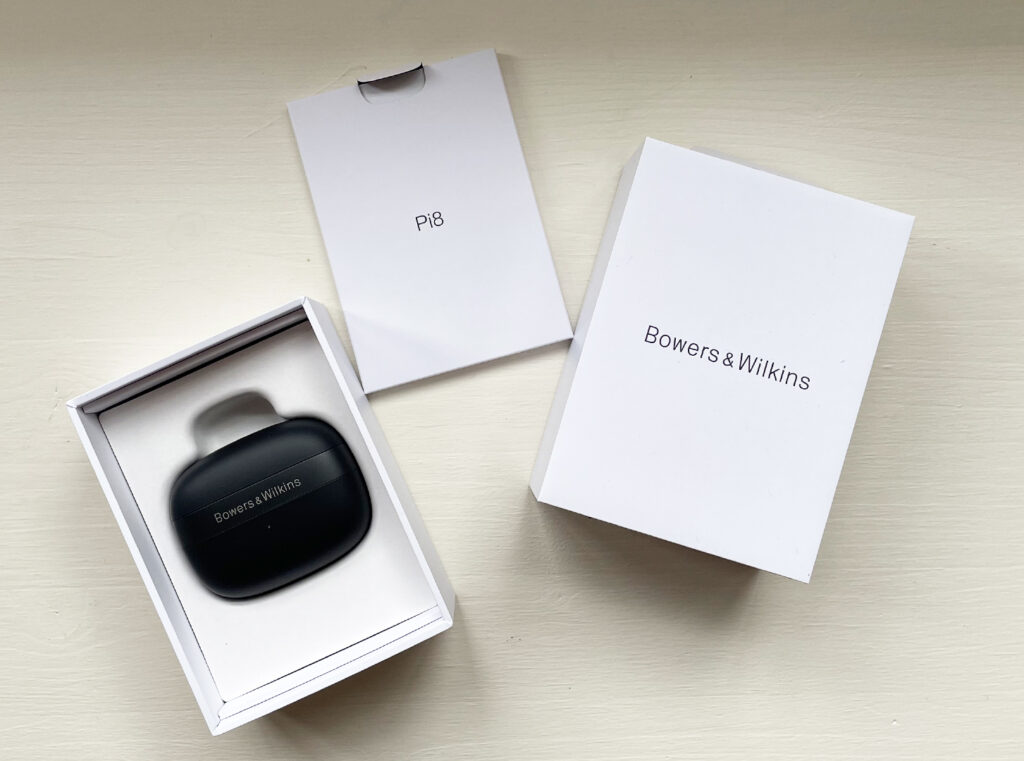
Lifting the lid on the Pi8
As with the Pi7 S2, the Pi8’s charging case has wireless audio transmission — simply connect a music source to the case via the supplied cable and beam audio to the Pi8 buds. This meant I was able to connect the supplied 3.5mm-jack-to-USB-C cable to the headphone output of my iPod Classic and wirelessly stream my music library of 4,436 songs to the Pi8 earbuds via aptX Adaptive. A USB-C-to-USB-C cable is also supplied.
It’s a neat feature that’s been boosted on the Pi8 to handle up to 24-bit/96kHz audio files, and continues to make B&W’s flagship charging case the smartest among wireless earbud rivals. You won’t find this feature on Sony’s WF-1000XM5 or Apple’s AirPods Pro 2, for example, and it comes into its own as a practical solution for travellers looking to connect the Pi8s to an in-flight entertainment system, say.
Several of the Pi8’s specs are similar to the Pi7. It has the same IP-54 rating for protection against dust and moisture, which means the buds can withstand sweat and sudden downpours without any issues. The charging case isn’t rated for dust or water protection and is annoyingly prone to finger marks and scuffs much like its predecessor — my black version quickly looked grubby during the review process, but the dove white, midnight blue, and jade green colour options may prove to be more resistant. Battery capacity for the earbuds has been boosted slightly over the Pi7, but overall it’s similarly rated at around 20 hours total for the earbuds and charging case combined.
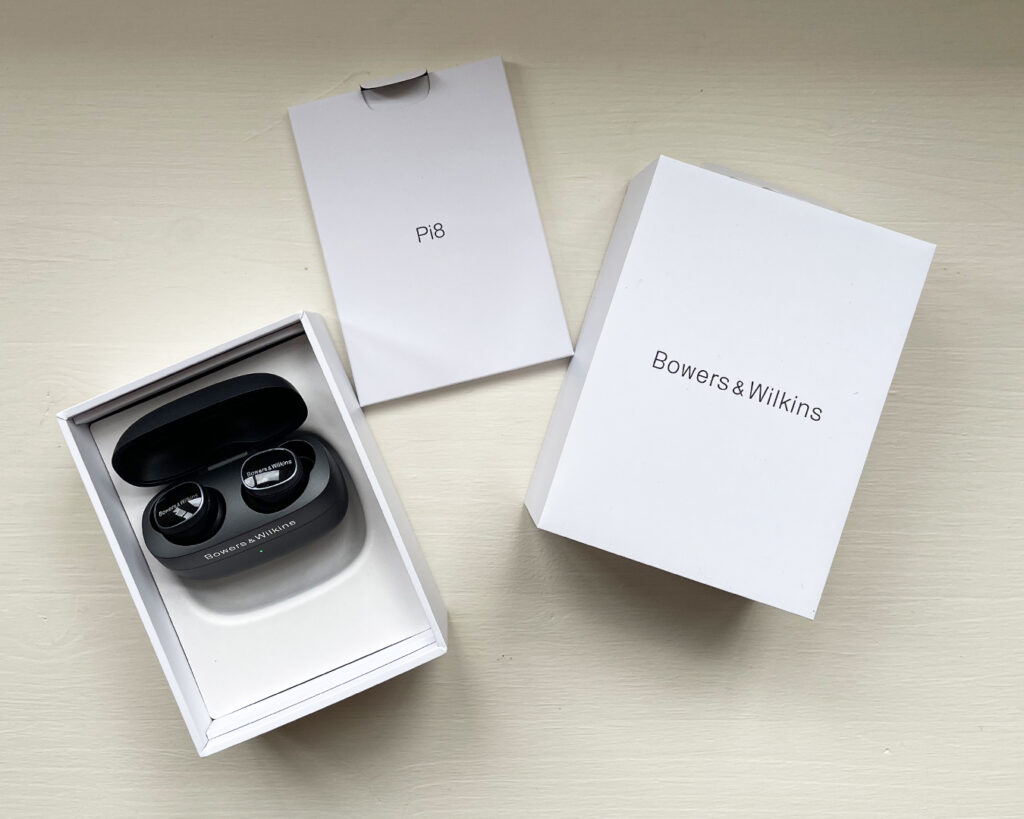
Tablet case reveals the Pi8’s more compact buds
Take control
As well as the external restyle, improved driver material and internal arrangement, further upgrades run to a new version of Bowers & Wilkins’ Music app (for both iOS and Android playback devices). The updated app is fully compatible with the latest Bowers & Wilkins’ earbuds and headphone models, adding finessed features, a new EQ feature and volume control adjustment, as well as staples like touch control customisation, noise cancellation, voice assistant activation, and wear detection.
I’ve been trialling the updated app ahead of its official launch. Accessing the Pi8’s control menus was smooth during the review period connected to a Sony Xperia 1 IV Android smartphone as my go-to portable music source, while the new ‘Made for iPhone’ certification meant it integrated smoothly with my iPhone 13 Pro. The stable multipoint support meant that I could connect to both playback devices simultaneously without any issues.
Aside from the extra controls, the updated app looks similar to previous iterations and pulls in content recommendations based on your music subscription listening habits. You can link music streaming services, including Tidal, Qobuz, Deezer, Amazon Music, and SoundCloud to centralise content from multiple streaming platforms in one place. Apple Music isn’t supported though.
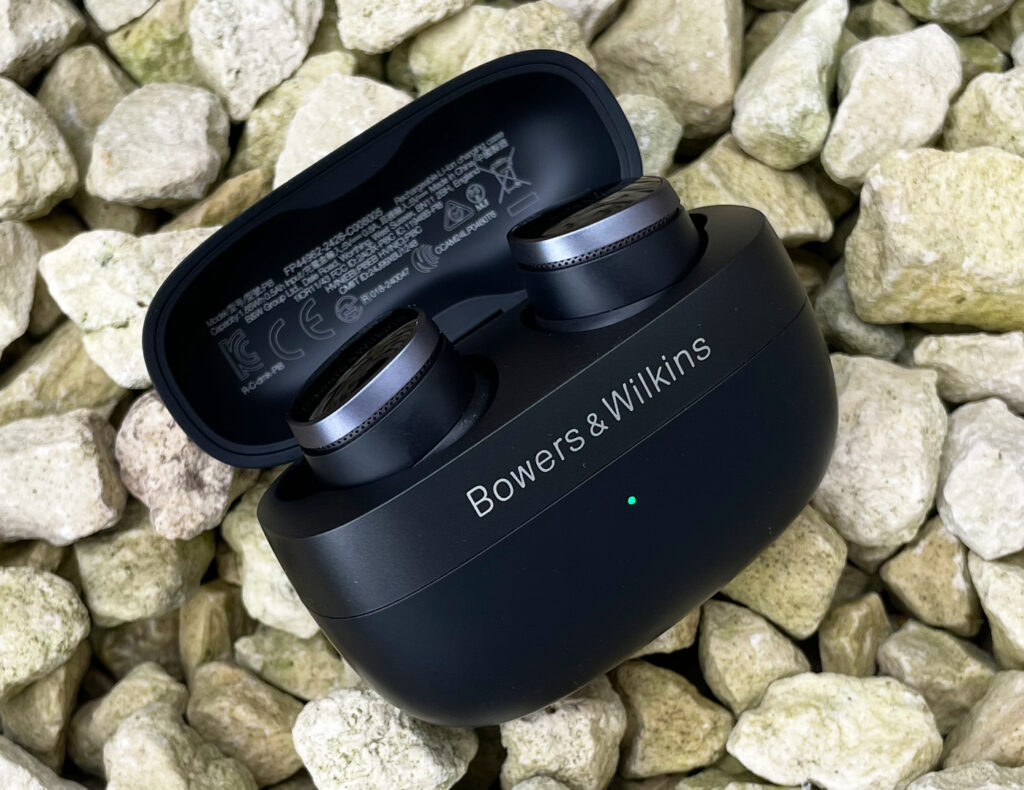
Pi8 with the Stones
Integration with linked services is slick and reliable, and I was able to jump between content from different playlists and services seamlessly. However, I did encounter the occasional error that saw me switch to Tidal’s dedicated app on my device, but I’d wager that any initial glitches will be quickly ironed out by future firmware updates.
Performance
Compared to flagship earbuds from the likes of Apple and Sony that come with powerful adaptive noise-cancelling modes and speak-to-chat features, the new Bowers & Wilkins’ flagship in-ears look a little basic. Noise-cancelling is either on or off, but there is a transparency mode to allow wearers to maintain a level of awareness of whatever’s going on around them.
Unlike some wireless earbuds that claim a step up in noise-cancelling performance with each incarnation, Bowers & Wilkins simply says that the shape of the new earbuds has enabled the noise-cancelling and call mics to be repositioned for better performance. Plus there’s an increase in the processing power to advance both noise cancellation and call performance. It proved effective during my routine train commutes, and successfully reduced the background noise level and muted the sound of fellow travellers to allow me to focus on listening to my music. After all, that’s what it’s all about.
Streaming my go-to Tidal playlist via my Sony Xperia 1 IV smartphone using aptX Adaptive showcases the Pi8’s audio pedigree. Bowers & Wilkins has a considerable hifi heritage and renown for producing some of the world’s most engaging and insightful loudspeakers, and while I marvelled at the company’s previous flagship in-ears for their ability to engage me with their powerful sound with whatever music I was listening to, the Pi8 goes even further.
That’s surely down to the larger single driver arrangement with carbon cone material, which delivered tracks I know well with even more captivating audio soundscapes. The Pi8 is fitted with some of the largest drivers I’ve encountered in a pair of wireless earbuds, but the sound feels entirely natural and balanced across the frequency range. There was always plenty of energy around lower bass notes to ensure music grabbed my attention, but it never sounded excessive or got too carried away for my tastes. Despite a new five-band EQ control being available, though, I didn’t feel the need to make any adjustments away from Bowers & Wilkins’ True Sound default, which means the sonic signature is right.
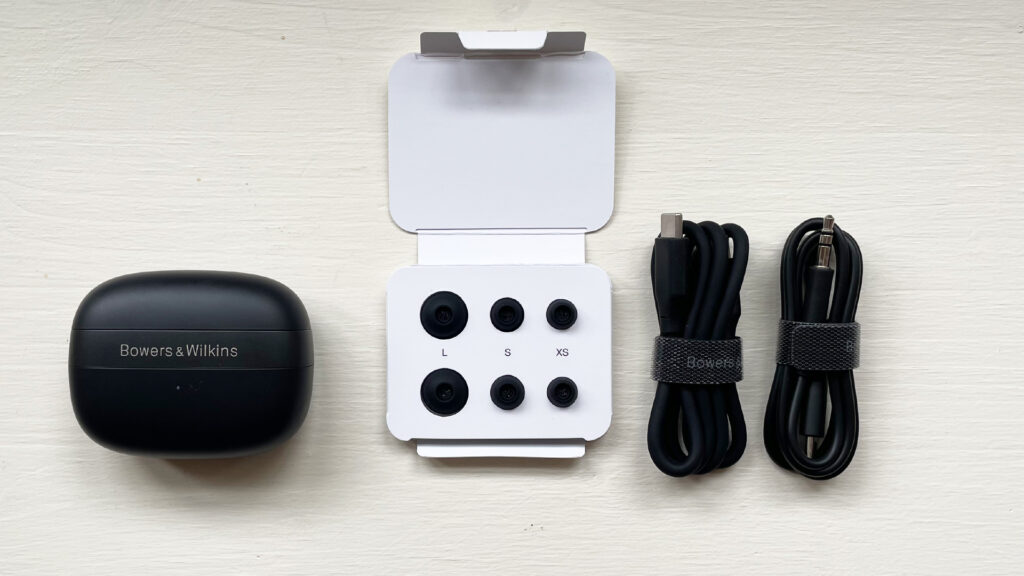
Supplied tip sizes include XS, cables come ready wrapped in branded tidies
Just let go
Bass levels on tracks like Let Go by Deadmau5 streamed via Tidal in 24-bit/44.1kHz had a great sense of drive and bass energy while also sounding tight and controlled. Strings and synths sound rich and warm without any loss of mid-bass nuance. Luther Vandross’s soulful vocals sounded characteristically smooth and velvety on Searching By Change (Tidal, 16-bit/44.1kHz), and the timeless track was a joyous listen on the Pi8 that effortlessly transported me back to the 1980s. Similarly, Volume by Caribou (which uses a sample of Pump Up The Volume by MARRS) was enormous fun streamed at 24-bit/44.1kHz, conjuring up a soundscape that felt like it expanded outside of my ears and head.
Only a slight lack of upper-mid detail counted against the sonic picture for my tastes. Jessie Ware’s vocals on Spotlight (16-bit/44.1kHz via Tidal) sounded less forward in the mix than I am used to, but that’s a minor criticism and wasn’t enough to make me reach for the EQ controls in the app as the Pi8 still managed to make the most of the track’s house/nu-disco groove.
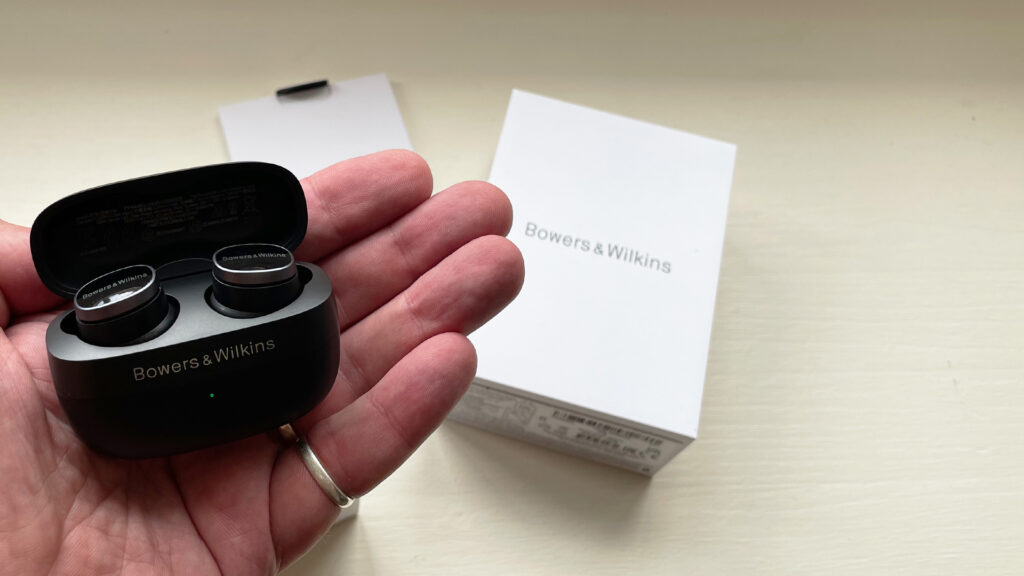
A bud in the hand, compact, discreet and audio focussed, that’s the Bowers & Wilkins’ way
In summary
As flagship wireless earbuds go, Bowers & Wilkins continues to build on its strengths and pushes the sound quality envelope of its wireless earbuds. The Pi8 balances nice-to-have features with the company’s impressive hifi credentials to satisfy music lovers and fans of the specialist audio brand who like their beats to come with a richly textured, dynamic sound.
While it’s undeniably a premium product with better styling and improved features that should be applauded for maintaining the same price as its predecessor, compared to flagship rivals the Bowers & Wilkins Pi8 doesn’t come cheap, but it’s worth every penny.


